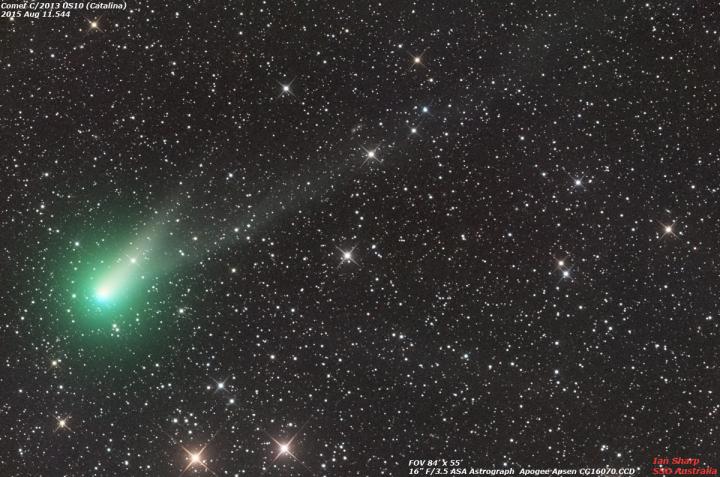Everyone loves comets. When we get a bright one every 15 or 20 years the world goes nuts.
We thought we had one. Two years ago, the automated Catalina sky survey, using a large telescope, discovered a strange new comet whose origin was the faraway Oort cloud. Astronomers closely monitored it and by last spring had high hopes that this month would deliver a worthy naked eye spectacle.
But in September, “Comet Catalina” (Comet C/2013 US10) stopped brightening. By the time it whipped around the Sun on November 15, it was obvious that this comet was underperforming.
However, the comet’s visibility is slowly improving as it moves away from the bright light of the Sun and towards Earth. It is now visible through binoculars and moving through an easily located part of the sky.
A lot of media hype is surrounding Catalina, and we don’t want to oversell this. But you also don’t want to miss something that could be worthwhile. So here’s the real scoop.
Through telescopes using long exposure photography, Catalina looks fantastic. It’s green and has a double tail. It’s gorgeous. Everyday it’s a little different, as it now approaches Earth.
Catalina might surprise us and brighten up enough to be visible to the unaided eye, if you live away from city lights. Otherwise use ordinary binoculars. Depending on your sky conditions, it may pop dramatically or it may be impossible to see. You’ll never know unless you check it out yourself.
When to look for Comet Catalina
Over the next couple of weeks, get up a couple hours before sunrise (about 6 a.m.). Gaze toward the east, the direction of the sunrise, just before the sky starts to brighten. Although it will comes nearest to us on January 17, the best time to see it is probably early in the New Year, once the full Christmas Moon dims and leaves us with darker skies. On New Year’s morning (January 1), from 2 A.M. to sunrise, the comet will be a half of a degree (about the width of the Moon) from the bright star, Arcturus.
Where to Look for Comet Catalina
First, you’ll see a super bright “star” low in the east; this is planet Venus. Look far to the upper left of Venus and you’ll notice a bright orange star—the famous Arcturus. You can also find Arcturus by following the arc of the Big Dipper’s handle.
How to See Comet Catalina
Although it’s technically visible to the unaided eye, you’ll need ordinary binoculars. You should see a hazy roundish blog of light; this is the comet’s body. Keep looking and binoculars might also show the comet’s tail, depending on how long and bright it becomes.
Comets are unpredictable, so no one knows. Two years ago, comet ISON was supposed to get amazing and instead turned into a bust, literally. It simply disintegrated. If you live in a big city with a lot of streetlights, you probably won’t see it at all. In that case, forget the whole thing.
If you’re lucky enough to enjoy dark, clear skies in the New Year, grab some binoculars and look up! Comet Catalina will soon be gone, never to visit again!










